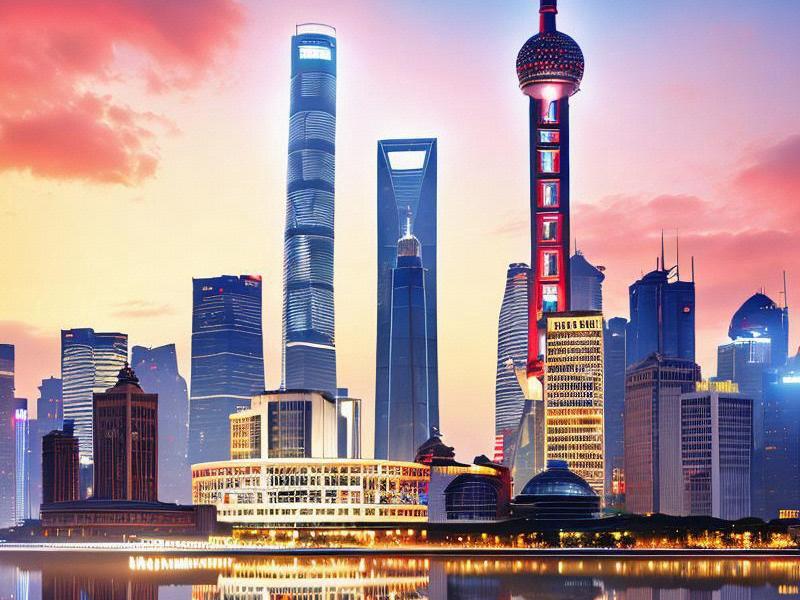Shanghai and Its Surroundings: A Comprehensive Overview of the Dynamic Metropolis and Its Vicinity
⏱ 2025-04-30 12:48 🔖 上海龙凤419
📢0℃

Shanghai, often referred to as the "Pearl of the Orient," stands as a beacon of modernity and tradition in China. As the largest city in the country, Shanghai is a melting pot of cultures, a hub for international trade, and a symbol of China's economic prowess. But beyond the bustling streets of the Bund and the futuristic skyline of Pudong, the city's surroundings hold their own unique stories and charm.
A City of Contrasts: Shanghai's Urban Landscape
Shanghai's urban landscape is a testament to its rapid transformation over the past few decades. The city is divided into two main areas: Puxi (west of the Huangpu River) and Pudong (east of the Huangpu River). Puxi, with its historic architecture and traditional neighborhoods, offers a glimpse into the city's past. The Bund, a famous waterfront promenade, is lined with colonial-era buildings that now house banks, hotels, and restaurants.
In stark contrast, Pudong represents Shanghai's future. This area has seen exponential growth since the late 20th century, transforming from farmland to a futuristic metropolis. The iconic Oriental Pearl Tower, the Jin Mao Tower, and the Shanghai Tower are just a few of the skyscrapers that dominate the skyline. Pudong is also home to Lujiazui, the financial district, where some of the world's tallest buildings stand as symbols of China's economic rise.
Cultural Heritage: Preserving the Past
Despite its rapid modernization, Shanghai has made significant efforts to preserve its cultural heritage. The Yu Garden, a classical Chinese garden built in the Ming Dynasty, is a serene oasis in the heart of the city. Its intricate pavilions, rockeries, and ponds offer a glimpse into traditional Chinese landscaping.
上海龙凤419自荐
The French Concession, another historic area, is known for its charming cobblestone streets, tree-lined boulevards, and European-style architecture. This neighborhood has been revitalized in recent years, with boutique shops, art galleries, and cafes dotting the streets.
Shanghai's museums and art galleries also play a crucial role in preserving and showcasing the city's rich cultural history. The Shanghai Museum, housed in a former bank building, features an impressive collection of Chinese art, including ceramics, calligraphy, and paintings. The Power Station of Art, a former power plant turned contemporary art museum, attracts visitors from around the world with its innovative exhibitions.
Economic Growth: A Global Financial Hub
Shanghai's economic growth has been nothing short of remarkable. In 1990, the Chinese government established the Shanghai Pudong New Area, marking the beginning of a new era for the city. Today, Pudong is home to the Shanghai Stock Exchange, the headquarters of several major banks and multinational corporations, and a thriving financial district.
The city's port, the Port of Shanghai, is one of the busiest in the world, handling millions of containers annually. This maritime hub connects Shanghai to global markets, making it a critical player in international trade.
上海私人品茶
Shanghai's economic success is not limited to finance and trade. The city has also become a center for technology and innovation. Zhangjiang Hi-Tech Park, often referred to as "China's Silicon Valley," is home to numerous high-tech companies, research institutions, and startups. This area has attracted talent from around the world, contributing to Shanghai's reputation as a global innovation hub.
Surrounding Regions: A tapestry of Culture and Nature
While Shanghai itself is a fascinating city, its surrounding regions offer a diverse range of experiences. The nearby city of Suzhou, often called the "Venice of the East," is renowned for its classical gardens and canals. The Humble Administrator's Garden, one of the most famous gardens in China, is a masterpiece of Chinese landscaping art.
The ancient town of Zhujiajiao, located about an hour from Shanghai, is a well-preserved example of a traditional water town. Its stone bridges, narrow canals, and historic buildings transport visitors back in time. This charming town is a popular destination for day trips from Shanghai.
Nanjing Road, one of the world's busiest shopping streets, stretches from the Bund to People's Square. This iconic shopping district is a must-visit for those looking to experience the vibrant consumer culture of Shanghai. From luxury boutiques to local shops, Nanjing Road offers something for everyone.
上海花千坊龙凤
Environmental Initiatives: Striving for Sustainability
As a global city, Shanghai is also taking steps to address environmental challenges. The city has implemented various initiatives to reduce pollution, promote green energy, and improve urban living conditions. The Shanghai Tower, the tallest building in China, incorporates green technologies such as energy-efficient systems and rainwater harvesting.
The city's public transportation system has also seen significant improvements. The Shanghai Metro, one of the busiest metro systems in the world, provides convenient and affordable transportation for millions of residents. The expansion of the metro network has helped reduce traffic congestion and air pollution.
Conclusion: A City of Endless Possibilities
Shanghai and its surroundings are a testament to China's rapid development and cultural richness. From the futuristic skyline of Pudong to the historic charm of Suzhou, this region offers a diverse range of experiences that captivate visitors and residents alike. As Shanghai continues to grow and evolve, it remains a symbol of China's aspirations and a global hub for innovation, culture, and commerce.
In conclusion, Shanghai and its surrounding areas are a dynamic tapestry of urban development, cultural heritage, and economic growth. The city's ability to blend tradition with modernity, while addressing environmental challenges, makes it a model for sustainable urbanization. Whether you are a history enthusiast, a shopping aficionado, or a technology lover, Shanghai and its surroundings offer endless possibilities for exploration and discovery.
【潮涌长三角:上海的半径与圆周】从外滩灯光到江南水乡的共生密码Shanghai's Vibrant Cultural Scene: A Blend of Tradition and Modernity【霓虹与素笺】上海女性的百年气质图谱Shanghai 5250: Quantum Leisure Singularity and the Galactic Nightlife Matrix【城市观察】文化魔方的三原色:上海剧场、书店与美术馆的共生实验Shanghai's Nightlife Renaissance: Where Imperial Heritage Meets Quantum Innovation【霓虹密码】上海娱乐会所的时空折叠术Shanghai's Smart Nightlife Ecosystems: Blending Imperial Heritage with AI-Driven Innovation【量子上海】在11个维度中同时绽放的魔都镜像(1850-2025)Shanghai's Finest Women: A Story of Resilience and Excellence

